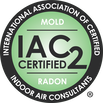Mike's Home Inspector BlogMichael Burfitt |
|
I had an incident at home a couple of years ago: it was about 6am one morning, my son was just a baby and as any of you parents know sleep was at a premium at that time. We all were in a much-needed deep sleep when I realized there was a BEEP BEEP sound in the house. I immediately jumped up and went to investigate. Turns out it was an older (and quieter) smoke detector downstairs that was defective and needed to be replaced but it occurred to me that the sound was muffled, and it wasn’t immediately obvious it was the smoke detector. As soon as the store opened, I purchased and installed a brand-new, much louder unit before heading off to work and made sure to carefully inspect my entire system that evening, including checking to see if I could still hear the basement detectors from the bedrooms with the doors closed.
One of the most worrying trends I see as a home inspector is the lack of proper smoke and carbon monoxide detection. My concerns include poor placement and outdated units right up to a complete lack of units in the home. Smoke & Carbon Monoxide (CO) detectors should be located:
Conversely, they should not be located:
There are various models available that are hardwired, run on batteries, or a hybrid of the two, where batteries are used as a backup. I always recommend the hybrid model, which provides the stability of being attached to the home’s electrical system but with the backup in case of power failure given the frequent power outages we have in Nova Scotia. Ideally, all detectors should be linked together so that all sound when one goes off, although that can be difficult to retrofit into older homes. CO detectors serve a similar potentially lifesaving purpose. While dangerous levels of CO in a home is relatively rare, the simple fact is that CO is odorless, tasteless, and toxic to humans even in small quantities. While not all homes have to worry about CO (such as all-electric homes without garages), in most cases is it is necessary to have CO detectors in the same locations as smoke detectors. It is not enough to just install and forget about these units: not only should they be regularly inspected and tested, but they need to be replaced regularly. Smoke detectors usually have a life expectancy of about 10 years and CO detectors should be replaced every 5 years. Combined, these two types of detectors could save your life (smoke in particular only takes minutes to become fatal) and need to be treated as critical components to a safe and healthy home. |
Archives
July 2024
Categories
All
|
|
Inside Edge Home Inspections Ltd.
Halifax, NS 902-209-9921 [email protected] Proudly Serving the HRM & Central Nova Scotia |

 RSS Feed
RSS Feed

